
Good Cooking since 1995
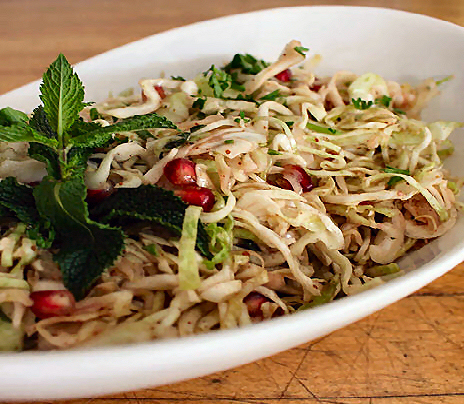
Salatet Malfoof---Cabbage Salad w/ Garlic, Lemon and Mint
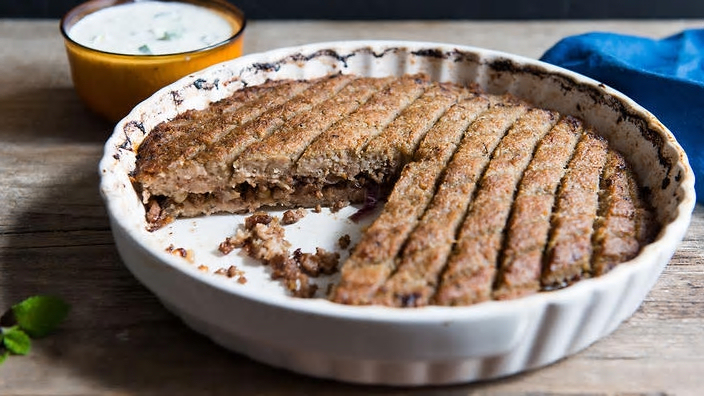
Kibbi Bissaniyyeh, Filled Lamb and Wheat Meze---Baked (above) or Fried (Below)
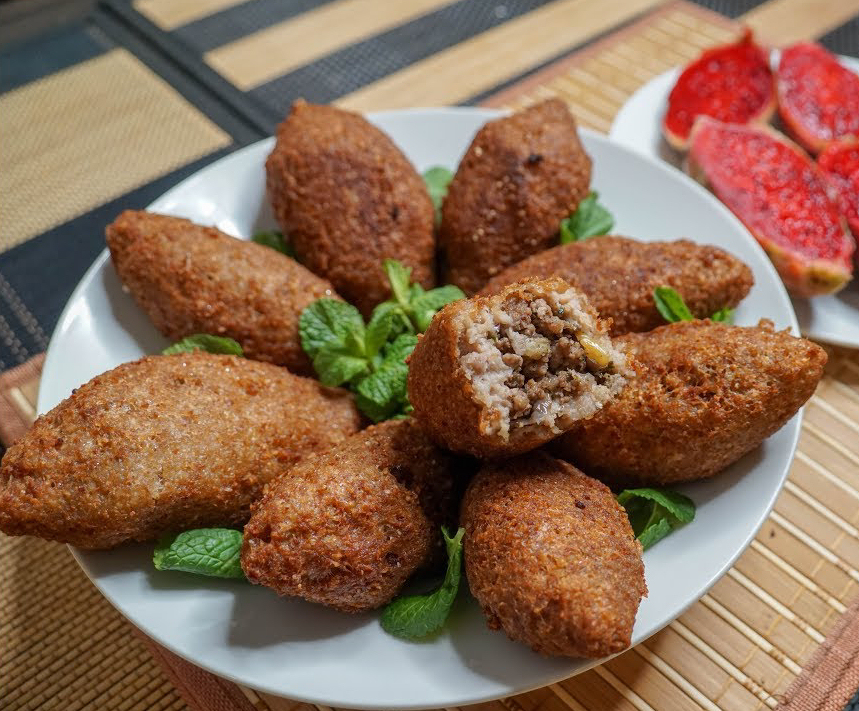
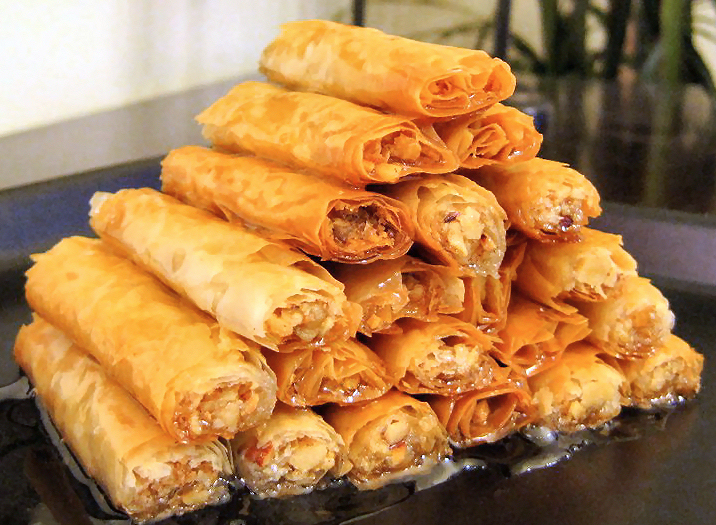
Boughasha---Baked "Cigar" Pastries with Walnut Filling
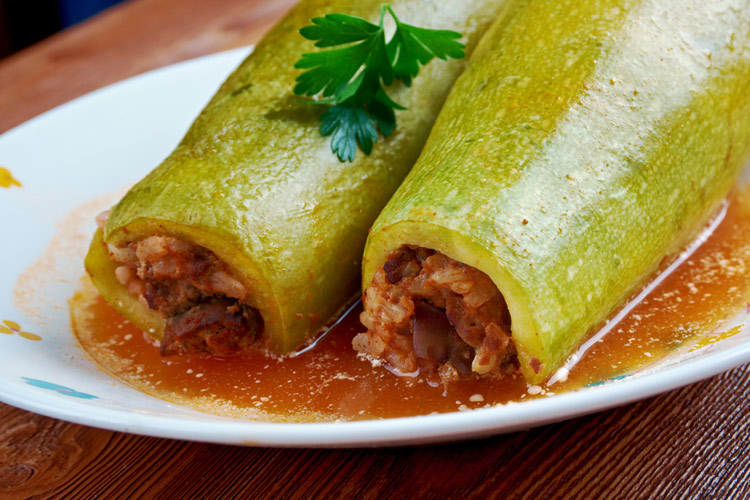
Kousa Mahshi---Stuffed Squash with Tomatoes
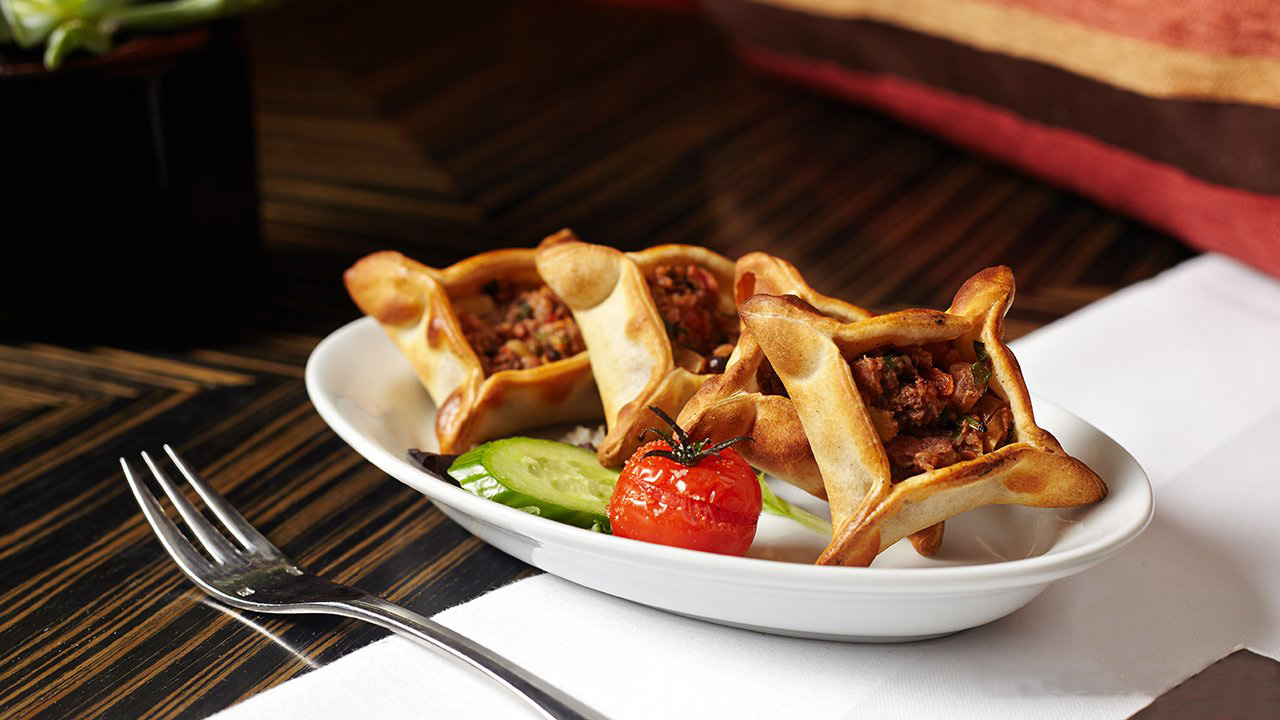
Sfeeha---Baked Lamb Pies

Karnabeet Makly---Deep Fried Cauliflower

Baba Ghannooj---Cold Eggplant Puree with Lemon Juice
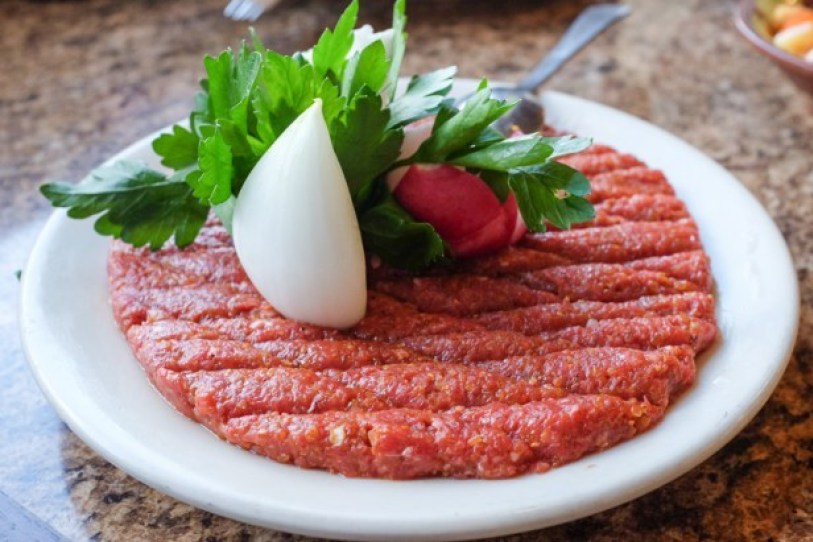
Kibbi Nayyah---Raw Ground Lamb with Cracked Wheat
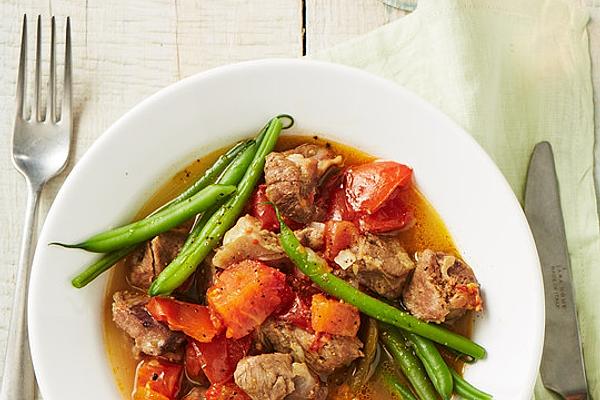
Lubya Khadra Billahma---Lamb with Green Beans and Tomatoes
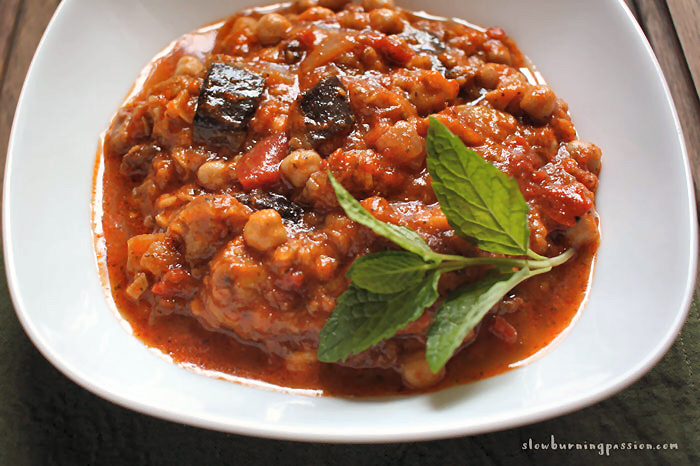
Musakka---Baked Eggplant, Tomato and Chick-Pea Casserole
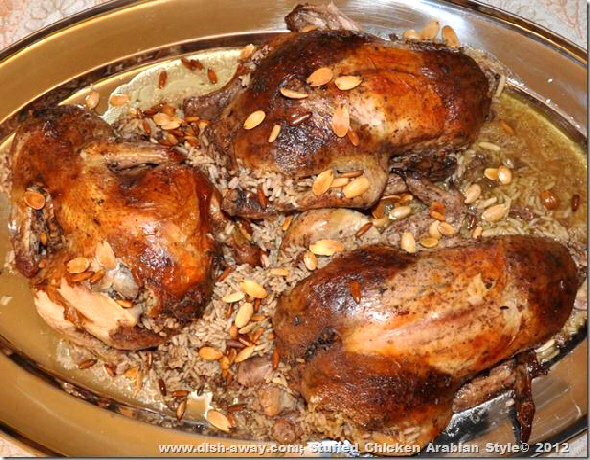
Dalai Mahshi---Roast Chicekn with Rice Pinenuts and Currants
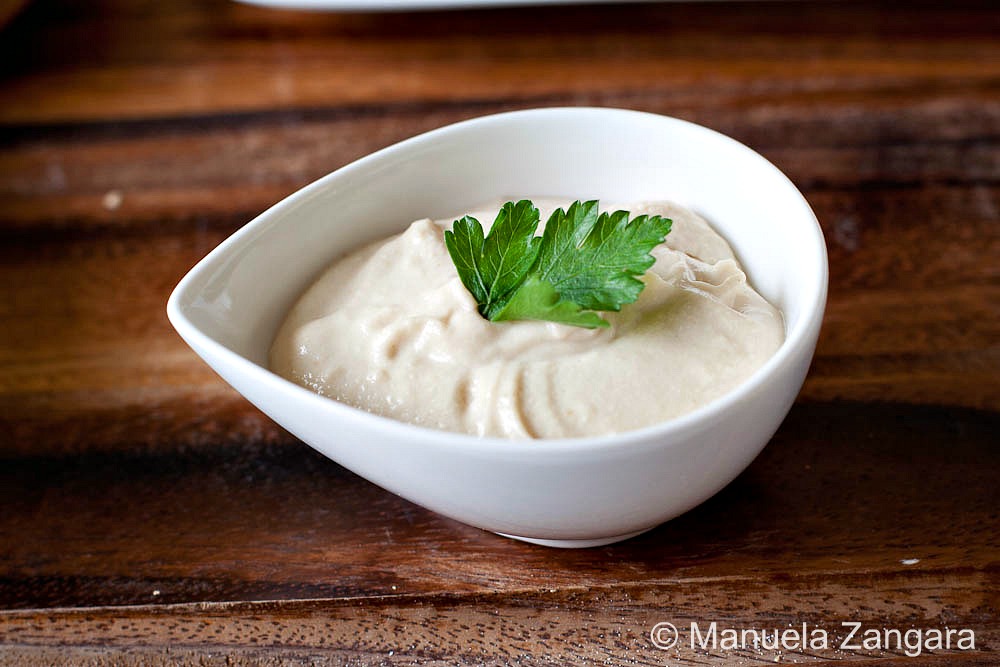
Taratoor---Creamy Seasame Sauce
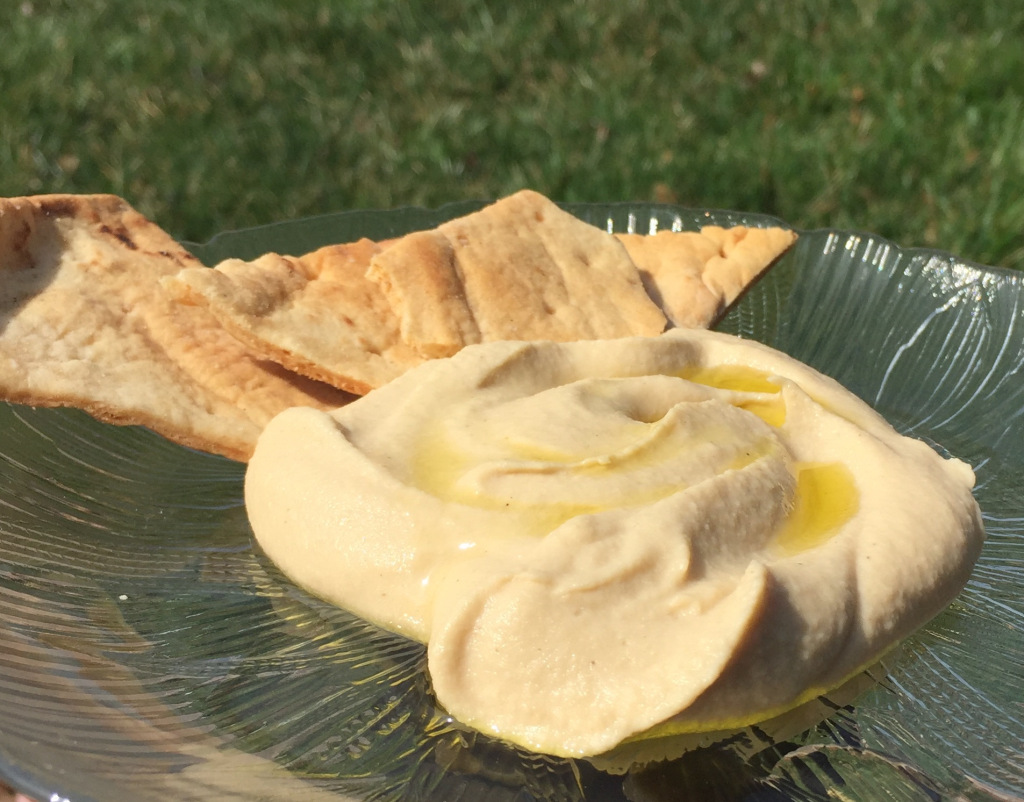
Hummus bi Tahina---Chick Pea and Garlic Puree
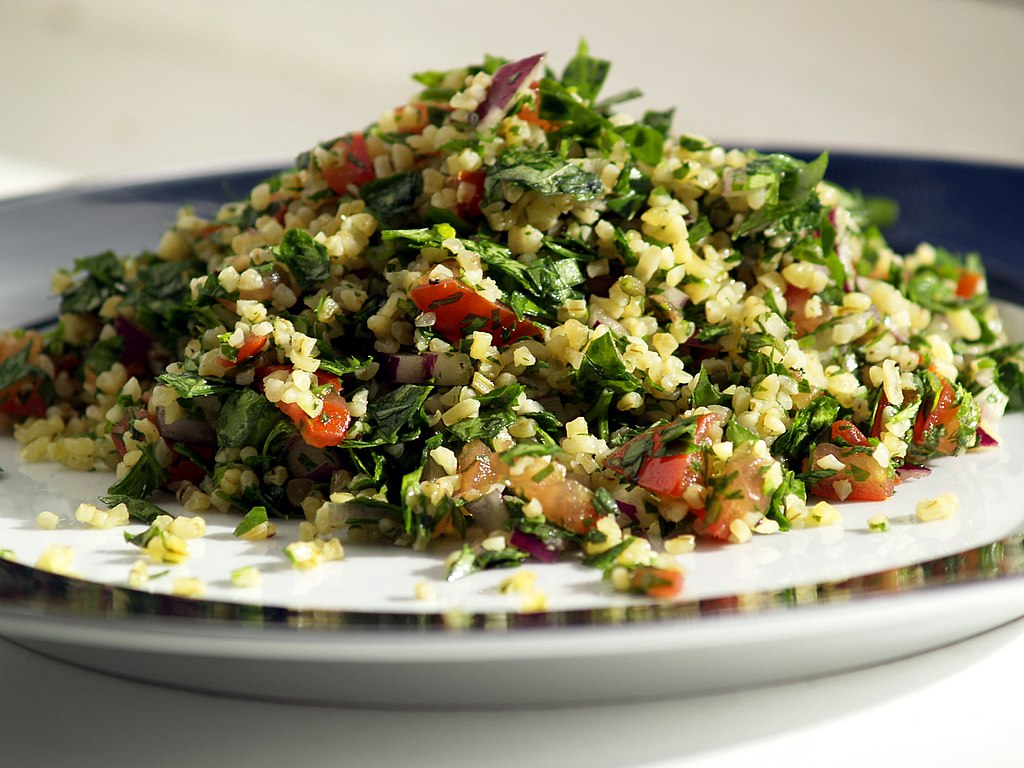
Tabbouleh---Crushed Wheat, Tomato, Mint and Parsley Salad
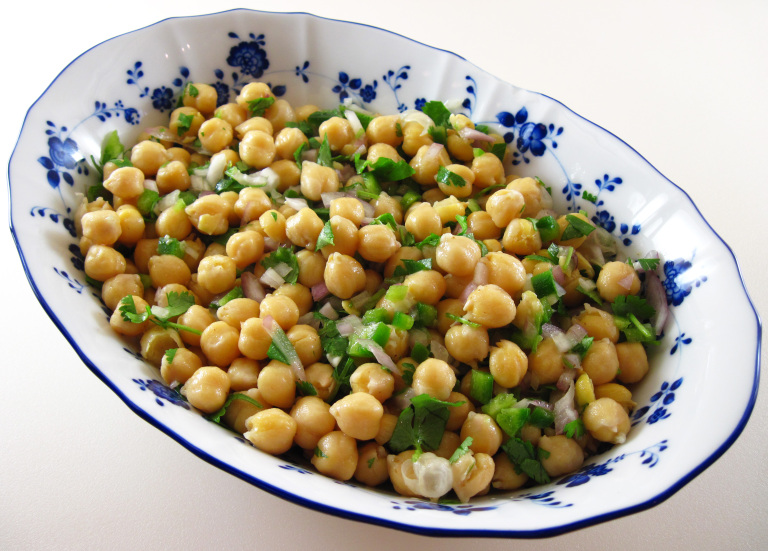
Salatet Hummus---Chick-Peas Salad
Lebanese Arabic Common Cooking Words
| Thanks to Raymond Bandar for this information, he is from Lebanon, so some terms may be different in other Middle Eastern Countries. | |
| 'ARAQ anise flavored liqueur from grapes | LOUBIEH green beans |
| 'AWWAMAAT Lebanese doughnuts | MA'AMOUL easter cakes made with semolina |
| BABA GHANNOUJ eggplant puree with sesame | MAHSHI anything which is stuffed |
| BAQLI Purslane | MI'L'AAQ grilled |
| BAAMIEH Okra | MALFOUF cabbage |
| BANADOURA tomatoes | MA'EZ ZAHR orange blossom essence |
| BAQDOUNIS parsley | MA'EL WARD rose water |
| BAQLAWA many-layered sweet pastry | MEZA hors d'oeuvres |
| BATINJAAN eggplant | MOGHLIE rice pudding |
| BAYD eggs | MUJADDARAH lentil stew |
| BOEREK Turkish pastry | MURABBA jam |
| BOUZA ice cream | MUSTIKAH gum arabic |
| BURGHUL cracked wheat | QARNABEET cauliflower |
| DJAAJ chicken | QATER sugar syrup |
| GHAMEH stuffed sheep's stomach | QAWWRAMA preserved meat |
| HABASH turkey | QOUZI stuffed baby lamb |
| HALEEB milk | SAHLAB corn flour |
| HREESI wheat porridge | SAMBOUSIK hot pastry filled with meat and nuts |
| HUMMUS chick peas | SAMMAK sumac seasoning from sour purple seeds |
| KAFTA ground meat patties | SAMNEH clarified butter-popular shortening |
| KA'K hard rolls or cakes | SHARAB syrup |
| KATAIF sweet stuffed pancakes | SHOURABA soup |
| KHUSHAAF raisins with water and sugar | SMAISKEH fillet of lamb |
| KHYAAR cucumbers | SMEED semolina |
| KNAAFEH cheese pastry | SILQ Swiss chard |
| KIBBEH ground meat and burghul mixture | TABBOULEH salad of chopped mint, parsley and burghul |
| KISHK laban ferrnented with burghul | TAHEENI sesame oil |
| KIZBARA coriander | TARATOUR sesame sauce |
| KOUSA marrow squash | TEEN figs |
| KROUSH MAHSHIEI I stuffed intestines | YAKHNIE stew |
| LABAN cultured milk; yoghurt | ZA'TAR thyme; marjoram |
| LABNEH cream cheese made from laban | ZAYT oil |
| LAHM meat | |
Salatet Malfoof---Cabbage Salad w/ Garlic, Lemon and Mint
Serves 4
2 cups coarsely shredded white cabbage
1/2 teaspoon finely chopped garlic
1/2 teaspoon salt
1/4 cup fresh lemon juice
1/4 cup olive oil
Garnish: 1/4 cup pomegranate seeds and 2 tablespoons finely cut fresh mint
In a small bowl, mash the garlic and salt to a smooth paste with a pestle or the back of a spoon. Add the lemon juice. Then, with a whisk or large spoon, beat in the olive oil, 1 tablespoon at a time. Continuing until the mixture is smooth. Place the cabbage in a salad bowl, and pour the garlic dressing over it. Toss lightly with a spoon until the cabbage is evenly coated. Sprinkle the top with mint and with pomegranate seeds and serve at once.
Kibbi Bissaniyyeh---Fried Stuffed Lamb; Croquettes-Pie-Meatballs
To serve 6
Stuffing
2 tablespoons olive oil
2 tablespoons pine nuts (pignolia)
2 tablespoons finely chopped onions
1/4 pound lean boneless lamb, preferably leg of lamb, coarsely ground
1/8 teaspoon ground allspice
1/2 teaspoon salt
Freshly ground black pepper
Filling
1 Kibbi nayya (raw kibbi) recipe (below)
1 cup olive oil
Make the stuffing in the following fashion: In a heavy 7-to 8-inch skillet, heat the 2 tablespoons of olive oil over moderate heat until a light haze forms above it. Drop in the pine nuts and brown them lightly. With a slotted spoon, transfer the nuts to a plate. Add the onions to the oil remaining in the skillet and, stirring constantly, cook for 5 minutes, or until they are soft and transparent but not brown. Add the lamb and, mashing it frequently with the back of a spoon to break up any lumps, cook until all traces of pink disappear. Tip the pan and drain off any excess fat. Stir the pine nuts, allspice, salt and a few grinds of pepper into the lamb mixture, taste for seasoning and set aside off the heat.
Moistening your hands with cold water from time to time, divide the Kibbi nayya into 6 equal portions and roll them into egg-shaped balls about 4 inches long and 2 1/2 inches in diameter in the middle. With your forefinger, make a tunnel-like pocket about 3 inches deep and 1 inch across lengthwise into each patty, starting from one of the tapered ends. Gently press about 2 tablespoons of the stuffing mixture into each pocket and, dipping your hands in cold water, reshape the patty around the stuffing to enclose it completely-this is the croqutte meatball shape and method.
In a heavy 10- to 12-inch skillet, heat the cup of olive oil over high heat until a light haze forms above it. Add the stuffed lamb patties and fry them for about 15 minutes, turning them occasionally with a spoon and regulating the heat so that they color evenly on all sides without burning. The patties are done when the lamb shows no trace of pink when pierced gently with the point of a sharp knife. Serve at once.
*Can be made like a pie too as seen in the picture---For the pie; divide the Kibbi Nayya in two and press one, evenly into the bottom of a baking dish and then roll the remainder between sheets of parchment to the same size as the casserole. Place the filling on top of the mixture in the casserole and top it with the rolled portion---decorate with crisscross pattern as seen in the picture. Bake at 375°F for about 25 minutes and then broil for 5 minutes to give it a nice brown color.
Karnabeet Makly---Deep Fried Cauliflower
Serve 4 to 6
Vegetable oil or shortening for deep frying
1 large cauliflower (about 2 to 2 1/2 pounds)
Taratoor sauce, made according to the recipe in this article
1 teaspoon salt
Cut away the thick stem at the base of the cauliflower and remove the green leaves. Break the flowerets off the center core and cut the core into 1-inch cubes. Wash the flowerets and cubes under cold running water.
In a 3 to 4-quart enameled or stainless-steel saucepan, bring 1 quart of water and the salt to a boil over high heat. Drop in the cauliflower and cook briskly, uncovered, for 10 minutes, or until the pieces are tender but still somewhat resistant to the point of a small, sharp knife. Drain in a sieve or colander.
In a heavy 10 to 12-inch skillet with a deep-frying thermometer or in an electric skillet, heat 1 or 2 inches of the oil or shortening until it reaches a temperature of 375°F. Pat the cauliflower completely dry with paper towels, and a dozen or so pieces at a time, fry them in the hot oil for about 15 minutes, or until golden brown on all sides. As they brown, remove them with a slotted spoon and drain them on paper towels. They may be served hot or at room temperature.
In either case, mound the cauliflower on a platter and spread the taratoor over it.
Baba Ghannooj---Cold Eggplant Puree with Lemon Juice
To make about 2 cups
1 medium-sized eggplant (about 1 pound)
1/4 cup fresh lemon juice
2 tablespoons taratoor sauce
1 large garlic clove, peeled and finely chopped, about 1 teaspoon
1 teaspoon salt
1 tablespoon olive oil
1/4 cup finely chopped onions
1 tablespoon finely chopped parsley, preferably flat-leaf parsley
First, roast the eggplant in the following fashion: Prick it in 3 or 4 places with the tines of a long-handled fork, then impale it on the fork and turn it over a gas flame until the skin chars and begins to crack. (Or, if you have an electric range, pierce the eggplant, place it on a baking sheet and broil 4 inches from the heat for about 20 minutes, turning it to char on all sides.)
When the eggplant is cool enough to handle, peel it, cutting away any badly charred spots on the flesh. Cut the eggplant in half lengthwise and chop it finely. Then mash the pulp to a smooth puree, beat in the lemon juice, taratoor, garlic and salt. Taste for seasoning.
To serve, spread the puree on a serving plate or mound it in a bowl and sprinkle the top with the olive oil, chopped onions and parsley.
Hummus bi Tahina---Chick Pea and Garlic Puree
To make about 2 1/2 cups
1 1/3 cups dried chick-peas, (garbanzos), or substitute 2 cups drained, rinsed, canned chick-peas
2 teaspoons salt
3 medium-sized garlic cloves, peeled and finely chopped, about 1 tablespoon
1/4 cup fresh lemon juice
plus 1/2 to 1 cup cold water
1 cup taratoor sauce (see recipe in this article)
ground cumin, chopped parsley and lemon wedges for garnish with warm pita
If you are using dried chick-peas, start a day ahead. Wash the peas in a sieve under cold running water, then place them in a large bowl or pan add add enough cold water to cover them by 2 inches. Soak at room temperature for at least 12 hours. Drain the peas and place them in a heavy 2 to 3-quart saucepan. Add the salt and enough fresh water to cover the peas completely. Bring to a boil over high heat, reduce the heat to low and simmer partially covered for about 2 to 3 hours until the peas are very tender. Replenish the liquid with boiling water from time to time to keep the peas covered throughout the cooking period. Drain the peas and reserve the cooking liquid.
In a small bowl, mash the garlic to a paste with a pestle or the back of a spoon. Add the peas and 1/2 cup of the reserved cooking liquid or water and mash vigorously to a smooth puree. (Alternatively, mash the garlic with a pestle or the back of a spoon, then force the garlic, peas and 1/2 cup of the cooking liquid or water through a fine sieve or a food mill set over a bowls) With a large spoon, beat in the lemon juice, a few tablespoons at a time, Beating constantly, pour in the taratoor in a slow thin stream and continue to beat until the mixture is smooth. Hummus should be thin enough to spread easily; if necessary, add up to 1/2 cup more of the chick-pea cooking liquid or water, beating it in a tablespoon at a time.
To serve, spread the hummus on a plate, or spoon it into a bowl. Sprinkle with less than 1/4 tsp ground cumin and 1 teaspoon chopped parsly with a side plate of lemon wedges and warm Pita.
Lubya Khadra Billahma---Lamb with Green Beans and Tomatoes
To serve 4
2 pounds green string beans, trimmed and cut into 2-inch lengths
3 tablespoons olive oil
1 pound boneless stewing lamb, cut into 1-inch cubes
1 cup finely chopped onions 6 medium-sized, fresh, ripe
tomatoes, peeled, seeded and coarsely chopped or substitute 2 cups chopped, drained, canned tomatoes
1 teaspoon salt
Freshly ground black pepper
1/2 teaspoon ground nutmeg, preferably freshly grated
1/2 teaspoon ground allspice
Spread the beans evenly in the bottom of a heavy 4 to 6-quart casserole, and set aside. In a heavy 10 to 12-inch skillet, heat the oil over moderate heat until a light haze forms above it. Add the lamb and brown it, turning the pieces frequently with a spoon and regulating the heat so they color deeply and evenly without burning. As they brown, transfer the pieces of lamb to the casserole, placing them on top of the beans.
Pour off all but a thin film of fat from the skillet, and in it cook the onions over moderate heat for 5 minutes, or until they are soft and transparent but not brown. Spread the onions over the lamb and cover them with the tomatoes. Sprinkle the top with salt, a few grindings of the pepper, the nutmeg and allspice. Place the casserole over low heat), cover tightly, and simmer without stirring for 1 hour, or until the beans and meat are tender. Serve at once from the casserole, accompanied, if you like, by steamed or boiled rice.
Dalai Mahshi----Roast Chicken with Rice, Pinenuts and Currants
To serve 4
1 cup uncooked long or medium-grain white rice
4 tablespoons butter
1/2 cup finely chopped onions
The giblets (liver, heart and gizzard) of the chicken, coarsely chopped
2 tablespoons pine nuts (pignolia)
2 cups water
1 tablespoon dried currants
2 tablespoons salt
Freshly ground black pepper
4 tablespoons butter, melted
1 - 3 to 3 1/2-pound chicken
3 tablespoons yoghurt
Place the rice in a sieve or colander and wash under hot running water until the water runs clear. Drain, and set aside.
In a heavy 3 to 4-quart saucepan, melt the 4 tablespoons of butter over moderate heat. When the foam begins to subside, add the onions and, stirring frequently, cook for 5 minutes, or until they are soft and transparent but not brown. Add the giblets and pine nuts and cook for 2 or 3 minutes. When the giblets show no trace of pink and the pine nuts are a delicate brown, stir in the rice and continue cooking until the grains glisten with butter. Add the water, currants, 1 tablespoon of the salt, and a few grindings of pepper. Bring to a boil, reduce the heat to low, cover and simmer for 25 to 30 minutes until the rice has absorbed all the liquid in the pan. Remove from the heat and with a fork stir in the melted butter.
Preheat the oven to 400°F. Pat the chicken thoroughly dry inside and out with paper towels, and spoon about 1 cup of the rice mixture into the cavity. (Set the remaining rice aside.) Lace the opening closed with skewers or by sewing it with a large needle and heavy white thread. Fasten the neck skin to the back with a skewer and truss the bird securely.
Combine the yoghurt with the remaining 1 tablespoon of salt and a few grindings of pepper and brush about half of the mixture over the chicken. Place the chicken, breast side up, on a rack in a shallow roasting pan. Roast in the middle of the oven for 15 minutes, then reduce the heat to 350°F. Baste the chicken with the remaining yoghurt mixture and roast for 1 hour more. To test the chicken for doneness, pierce the thigh with the point of a small, sharp knife. The juice that runs out should be pale yellow; if it is tinged with pink, roast the chicken another 5 to 10 minutes.
Transfer the bird to a heated platter, remove the trussing strings, and let the chicken rest for 5 minutes or so for easier carving. Fluff the reserved rice mixture with a fork, warm it over low heat, and serve it in a separate bowl.
Musakka---Baked Eggplant, Tomato and Chick-Pea Casserole
To serve 6
1 1/2 cups dried chick-peas (garbanzos), or substitute canned chick-peas, thoroughly drained and rinsed under cold water
Olive oil
2 medium-sized eggplants, about 1 pound each, washed but not peeled, and cut into 2-inch cubes
3 medium-sized onions, peeled and cut into 1/4-inch-thick slices
3 teaspoons salt
Freshly ground black pepper
12 medium-sized fresh, ripe tomatoes, peeled, seeded and finely chopped, or substitute 4 cups chopped, drained, canned tomatoes
1 1/2 cups water
Note: Starting a day ahead, wash the dried chick-peas in a sieve under cold running water, then place them in a large bowl or pan and add enough cold water to cover them by 2 inches. Soak at room temperature for at least 12 hours. Drain the peas and place them in a heavy 2 to 3-quart saucepan.
Add enough fresh water to the chick-peas to cover them completely and bring to a boil over high heat. Reduce the heat to low and simmer partially covered for about 2 to 2 1/2 hours until the peas are tender but still intact. Replenish with more boiling water from time to time if necessary. Drain the peas in a sieve or colander. (Canned chick-peas require no cooking and need only to be drained and rinsed thoroughly under cold running water.)
Preheat the oven to 400°F. In a heavy 12-inch skillet, heat about 1 inch of oil over high heat almost to the smoking point. Drop in the eggplant cubes and, stirring frequently, cook for about 5 minutes, or until they are lightly browned on all sides. With a slotted spoon, transfer them to a 9 x14 x 2 1/2- inch baking-serving dish and spread them out evenly. Add the onions to the oil remaining in the skillet and, stirring frequently, cook over moderate heat for 8 to 10 minutes, or until they are soft and delicately browned. Watch carefully for any signs of burning and regulate the heat accordingly.
Spread the onions and all of their cooking oil on top of the eggplant and pour over them an additional 1/2 cup of olive oil. Sprinkle the onions with 1 teaspoon of the salt and a few grindings of pepper. Scatter the chick-peas on top, and cover them with the tomatoes. Sprinkle with the remaining 2 teaspoons of salt and a few grindings of pepper and pour in the water.
Bring the musakka'a to a boil on top of the stove, then bake in the lower third of the oven for 40 minutes, or until the vegetables are very tender. Cool the musakka'a to room temperature and serve directly from the baking dish, accompanied by Pita bread.
Kibbi Nayyah---Raw Ground Lamb with Cracked Wheat
To serve 8
1 1/2 cups fine burghul (crushed wheat)
a pinch of cayenne pepper
2 teaspoons salt
1 pound very lean boneless lamb, preferably leg of lamb, finely ground 3 times
Freshly ground black pepper
Garnish
1/4 teaspoon ground allspice
1 cup olive oil
a pinch of ground nutmeg, preferably freshly grated nutmeg
2 small onions, peeled and cut into quarters
Place the burghul in a bowl or pan, pour in enough cold water to cover it completely and let it soak for about 10 minutes. Then drain it in a sieve or colander lined with a double thickness of dampened cheesecloth. Wrap the burghul in the cheesecloth and squeeze it dry.
Drop the burghul into a deep mixing bowl, add the lamb and, moistening your hands from time to time with cold water, knead until the mixture is smooth. Knead in the allspice, nutmeg, cayenne, salt and a few grindings of pepper and taste for seasoning.
Divide the mixture into 8 equal portions and, moistening your hands with cold water, shape them into round flat cakes about 4 inches in diameter and 1/2-inch thick. Place the cakes on individual serving plates and, with your thumb, make a well in the center of each cake. Pour 2 tablespoons of oil into each opening and let it flow over the surface of the meat. Garnish the kibbi nayya with quartered onions and serve at once, accompanied by Pita bread.
Sfeeha---Baked Lamb Pies
To make about 16 pies
Dough
2 1/4 to 2 1/2 cups lukewarm water (110°F to 115°F) - depends on the dryness of the flour
2 packages active dry yeast
a pinch of sugar
8 cups all-purpose flour
2 teaspoons salt
1/4 cup olive oil
Make the dough in the following fashion: Pour 1/4 cup of the lukewarm water into a small, shallow bowl and sprinkle it with the yeast and sugar. Let the mixture rest for 2 or 3 minutes, then stir to dissolve the yeast completely. Set the bowl in a warm, draft-free place (such as a turned-off oven) for about 5 minutes, or until the mixture almost doubles in volume.
In a deep mixing bowl, combine the flour and the 2 teaspoons of salt, make a well in the center and into it pour the yeast mixture, the 1/4 cup of olive oil, and 2 cups of the remaining lukewarm water. Gently stir the center ingredients together with a large spoon, then slowly incorporate the flour and continue to beat until the ingredients are well combined. Add up to 1/2 cup more lukewarm water, beating it in a tablespoon or so at a time, and using as much as necessary to form a dough that can be gathered into a compact ball. If the dough is difficult to stir, work in the water with your fingers.
Place the dough on a lightly floured surface and knead it by pressing it down, pushing it forward several times with the heel of your hand and folding it back on itself. Repeat for about 2 looselys, or until the dough is smooth and elastic. Sprinkle it from time to time with a little flour to prevent it from sticking to the board.
Shape the dough into a ball and place it in a lightly oiled bowl. Drape loosely with a kitchen towel and set aside in the warm, draft-free place for 45 minutes to 1 hour, or until the dough doubles in bulk. Punch the dough down with a single blow of your fist and divide it into 16 equal pieces. Roll each piece into a ball about 1 1/2 inches in diameter, cover the balls with a towel and let them rest for 30 minutes.
Filling
2 cups finely chopped onions
1 tablespoon plus 2 teaspoons salt
4 tablespoons olive oil
1/2 cup pine nuts (pignolia)
2 pounds lean boneless lamb, coarsely ground
2 medium-sized fresh, ripe tomatoes, peeled, seeded and finely chopped
1/2 cup finely chopped green pepper
1/2 cup finely chopped parsley, preferably flat-leaf parsley
1/2 cup fresh lemon juice
1/4 cup red wine vinegar
1 tablespoon tomato paste
1 teaspoon cayenne pepper
1 teaspoon allspice
Freshly ground black pepper
Meanwhile, prepare the filling. Drop the onions into deep bowl and sprinkle them with 1 tablespoon of the salt, turning them about with a spoon to coat them evenly. Let the onions rest at room temperature for at least 30 ininutes, then squeeze them dry and return them to the bowl.
In a small skillet or saucepan, heat 1 tablespoon of olive oil until a light haze forms above it. Add the pine nuts arid, stirring constantly, brown them lightly. Add them to the bowl of onions, along with the Iamb, tomatoes, green pepper, parsley, lemon juice, vinegar, tomato paste, Cayenne pepper, allspice, 2 teaspoons of salt and a liberal grinding of black pepper. Knead the mixture vigorously with both hands, then beat with a Wooden spoon until the mixture is smooth and fluffy. Taste for seasoning.
Preheat the oven to 500°F. With a pastry brush, coat 3 large baking sheets or jelly-roll pans with the remaining 3 tablespoons of oil.
On a lightly floured surface, roll each of the balls into a round about 4 inches in diameter and no more than Vs inch thick. To make open-faced pies, spoon about 1/2 cup of the lamb filling mixture on the center of each round. Then, with a spatula or the back of the spoon, spread the fillings to about 1/2 inch of the edge. (Be as fancy as you like in forming the doughs shape and use the picture as an inspiration!)
To make closed pies, spoon about 1/2 cup of the filling on the center of each round. Pull up the edge from 3 equally distant points to make a roughly triangular-shaped pie and pinch the dough securely together at the top.
With a metal spatula, arrange the pies on the baking sheets. Bake in the lower third of the oven for 30 minutes, or until the pastry is lightly browned. Serve hot, or at room temperature, accompanied, if you like, with yoghurt.
Kousa Mahshi---Stuffed Squash with Tomatoes
To serve 6
Sauce
7-8 medium-sized fresh ripe tomatoes, peeled, seeded and finely chopped or substitute 2 1/2 cups chopped, drained, canned tomatoes
1 cup finely chopped onions
2 1/2 cups water
1 teaspoon salt
Freshly ground black pepper
To make the sauce, combine the tomatoes, onions, 2 1/2 cups of water, 1 teaspoon salt and a few grindings of pepper in a heavy casserole large enough to hold the squash in 1 or 2 layers. Stirring frequently, bring to a boil over high heat, reduce the heat to low, cover and simmer for 20 minutes. Set aside.
Squash
6 medium-sized zucchini or other summer squash, each about 7 to 8 inches long
2 teaspoons salt
2 teaspoons finely cut fresh mint or 1 teaspoon dried mint
Meanwhile, wash the zucchini under cold running water. Pat them dry with paper towels and, with a small, sharp knife, cut about 1 inch off the stem ends. Carefully tunnel out the center of each squash leaving an 1/2-inchthick shell all around. The best utensil for this is the Syrian munara, or squash corer, but you can use an apple corer almost as effectively. As the squash are cored, drop them into a large bowl containing 2 quarts of water, 2 teaspoons of salt and the mint. Let the squash soak for 5 or 10 minutes.
Stuffing
1 pound lean ground lamb
2/3 cup uncooked long or medium-grain white rice, thoroughly washed and drained
1 teaspoon salt
1/4 teaspoon ground nutmeg, preferably freshly grated
1/2 teaspoon ground allspice
Freshly ground black pepper
To make the stuffing, combine the lamb, rice, 1 teaspoon salt, nutmeg, allspice and a few grindings of pepper. Knead vigorously with both hands, then beat with a wooden spoon until the mixture is smooth and fluffy. Spoon the stuffing into the squash, tapping the bottom end lightly on the table to shake the stuffing down, then filling the squash to their tops.
Place the squash in the tomato sauce, laying them flat. Bring to a boil over high heat, reduce the heat to low, cover tightly and simmer for 30 minutes, or until the squash show only the slightest resistance when pierced with the point of a small, sharp knife. Do not overcook.
To serve, carefully transfer the squash to a heated platter or individual serving dishes and spoon the sauce over them.
Tabbouleh---Crushed Wheat, Tomato, Mint and Parsley Salad
To serve 4 - 6
1/2 cup fine bulgur (crushed wheat)
1/3 cup fresh lemon juice
2 teaspoons salt
3 medium-sized fresh, ripe tomatoes, finely chopped
1/3 cup olive oil
1 cup finely chopped parsley, preferably flat-leaf parsley
1 cup finely chopped onions
2 tablespoons finely cut fresh mint or 1 tablespoon dried mint, crumbled
Romaine lettuce leaves
Place the bulgur in a bowl or pan and pour in enough cold water to cover it completely. Let it soak for about 10 minutes, then drain in a sieve or colander lined with a double thickness of dampened cheesecloth. Wrap the burghul in the cheesecloth and squeeze it vigorously until completely dry.
Drop the burghul into a deep bowl, add the tomatoes, parsley, onions, lemon juice and salt and toss gently but thoroughly together with a fork.
Just before serving, stir in the olive oil and mint and taste for seasoning. Mound the salad in a serving bowl or spoon it onto romaine lettuce leaves.
Salatet Hummus---Chick-Pea Salad
To serve 4
1 cup dried chick-peas (garbanzos)
1/4 cup finely chopped parsley, preferably flat-leaf parsley
1/4 cup finely chopped onions
1/2 teaspoon finely chopped garlic
3 tablespoons fresh lemon juice
2 tablespoons olive oil
1/2 teaspoon salt
A pinch of cayenne pepper
Starting a day ahead, wash the chick-peas in a sieve under cold running water, then place them in a large bowl or pan and add enough cold water to cover them by 2 inches. Soak at room temperature for at least 12 hours. Drain the peas and place them in a small, heavy saucepan. Add enough fresh water to cover them completely and bring to a boil over high heat. Reduce the heat to low and simmer partially covered for about 1 1/2 hours, replenishing the liquid with boiling water from time to time if necessary to keep the peas covered throughout the cooking period. When done, the peas should be tender to the bite but still somewhat firm. Drain and cool to room temperature.
Just before serving, combine the parsley, onions, garlic, lemon juice, olive oil, salt and cayenne pepper in a salad bowl, and beat them together with a fork. Add the chick-peas and toss gently to coat the peas evenly with the dressing. Taste for seasoning.
Taratoor---Creamy Seasame Sauce
To make about 1 1/2 cups
3 medium-sized garlic cloves, peeled and finely chopped (about 1 tablespoon total)
1 cup tahina paste (ground, hulled sesame seeds)
3/4 to 1 cup cold water
1/2 cup fresh lemon juice
1 teaspoon salt
In a deep bowl, mash the garlic to a paste with a pestle or the back of a large spoon. Stir in the tahina. Then, with a whisk or spoon, beat in 1/2 cup of the cold water, the lemon juice, and salt. Still beating, add up to 1/2 cup more of water, 1 tablespoon at a time, until the sauce has the consistency of thick mayonnaise and holds its shape almost solidly in a spoon. Taste for seasoning.
Taratoor can be served as a sauce with baked fish or fried cauliflower, and is used as an ingredient in hummus and baba ghannooj.
Boughasha---Baked "Cigar" Pastries with Walnut Filling
To make 7 dozen
3 ounces shelled walnuts, finely chopped (about 3/4 cup chopped)
2 tablespoons sugar
1/2 pound (2 quarter-pound sticks)butter, cut into bits and clarified
14 sheets filo pastry, each about 16 inches long and 12
Stir the chopped walnuts and the 2 tablespoons of sugar together in a small bowl and set the mixture aside.
Preheat the oven to 400°F. With a pastry brush, coat 2 baking sheets with 2 tablespoons of the butter.
Assemble each "cigar" in the following fashion: Brush one sheet of filo evenly with a teaspoon of the butter. Fold the sheet in half crosswise to
make a two-layered rectangle about 12 inches long and 8
inches wide. Brush the top with about 1/2 teaspoon of the
butter. Make a 1-inch-wide fold on the closed side of the
pastry and brush the fold lightly with butter. Sprinkle a
teaspoon or so of the walnut mixture in an even row along
its length and roll the filo into a tight cylinder about 1
inch in diameter.
Assemble the remaining sheets of No
in similar fashion. Gently transfer the rolls to the baking
sheet and brush the tops lightly with the remaining butter.
Bake in the top third of the oven for 20 minutes, or until
the rolls are crisp and a delicate golden brown. Then slide
them carefully onto a large serving platter.
Syrup
2
1/2 cups sugar
1 tablespoon fresh lemon juice
1 1/4
cups water
1/2 teaspoon bottled rose water
Meanwhile, make the syrup. In a small, heavy saucepan, bring
the sugar, water and lemon juice to a boil over high heat,
stirring until the sugar dis-solves. Cook briskly,
undisturbed, until the syrup reaches a temperature of 220°F
on a candy thermometer or a small bit dripped into ice water
immediately forms a coarse thread. Add the rose water and
pour the syrup into a heatproof bowl or pitcher and let it
cool to lukewarm.
To serve, cut the rolls into 2-inch
lengths and arrange them attractively on a serving plate.
Moisten the warm pastry with a little syrup and serve the
rest separately in a small pitcher.
Recipes:
Adapted from Time Life Books 1969 Middle Eastern Cooking by Chef John V., www. goodcooking.com
Photograph Credits:
Salate Malfoof
https://www.karamkitchen.com/menus
Kibbi-bil-Sayneeyeh
https://www.sbs.com.au/food/recipes/baked-kibbeh-kibbeh-bil-sayneeyeh
Boughasha---baked "Cigar" pastries,
http://whimsycakesndesserts.blogspot.com/
Sfeeha
https://www.noura.co.uk/sfeeha/
Karnabeet Makly, Fried Cauliflower
https://www.washingtonpost.com/recipes/crisped-cauliflower-with-lemon-tahini-sauce/13629/
Baba-gnoosh
https://foodwishes.blogspot.com/2015/07/baba-ghanoush-day-after-dip.html
Kibbeh Nayeh
https://www.arabamerica.com/kibbeh-nayeh-is-this-arab-food-good-for-you-the-usda-says-it-isnt/
Lubya Khadra Billahma-Lamb Tomatoes
https://www.chefkoch.de/rs/s0/lubya+khadra+billahma/Rezepte.html
Moussaka Hummus
http://www.slowburningpassion.com/maghmour-the-moussaka-from-lebanon-that-will-make-you-happy/
Musakhan, Roast Chicken
http://www.canaanpalestine.com/en/article/91/Musakhan
Djaaj Mahshi
http://www.dish-away.com/2012/04/arabian-style-stuffed-chicken-recipe.html
Hummus bi Tahini
https://piecrustandpasta.com/2016/03/18/hummus-bi-tahini/
Salate Hummus
https://inthekitchenwithkath.com/2012/11/18/indian-chickpea-salad/
Tabbouleh
https://en.wikipedia.org/wiki/Tabbouleh
Taratoor
http://recipegreat.com/imgs/5119-taratour-sauce-01.jpg .html
